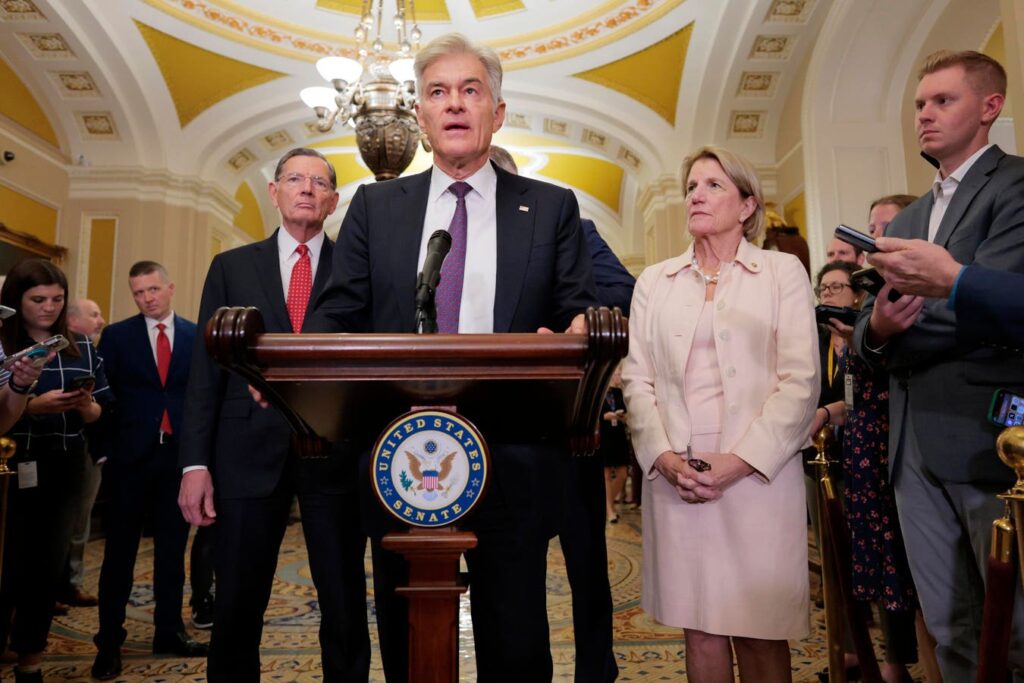Last night, the Senate Parliamentarian ruled that several key aspects of the proposed “Big Beautiful Bill” violate the Byrd Rule. This means that they cannot be included in the budget reconciliation bill, as they would need 60 votes to pass the Senate.
According to a press release from the Senate Budget Committee ranking member, the following aspects related to higher education would require 60 votes to pass, and therefore can’t be included in the current proposal:
- Changes to loan repayment plans for existing student loan borrowers, including migrating them into an amended version of Income-Based Repayment.
- Changes to PSLF eligibility requirements that would block medical residents from having their time in residency count as qualifying employment.
- Expanded Pell Grants to unaccredited and for-profit institutions under the Workforce Pell program.
While the Senate Parliamentarian’s decisions are not binding, the Senate has historically followed their direction when it comes to pending legislation.
This means that existing student loan borrowers can breath a small sign of relief that proposed student loan repayment plan changes wouldn’t effect them. However, the Parliamentarian didn’t block the changes for future borrowers — meaning that starting in 2026, the new Repayment Assistance Plan could still go into effect for new borrowers.
What The Byrd Rule Says
The Byrd Rule is a Senate procedural rule that limits what can be included in a budget reconciliation bill. The rule prevents provisions that do not primarily impact government spending or revenues, or that increase the deficit beyond a ten-year window. It also bars any “extraneous matter,” which is defined by the Parliamentarian via a six-part test.
According to the press release, it’s important to note that The Parliamentarian’s advice is based on whether a provision is appropriate for reconciliation and conforms to the limitations of the Byrd Rule. It is not a judgement on the relative merits of a particular policy.
In the case of student loan repayment plan changes, the Byrd rule was likely triggered because it altered existing legal rights and applied to current borrowers in a way that was not tied to the budget. As such, changing existing repayment plan rules likely exceeded the scope of budget reconciliation.
Potential reforms could still happen, but it would require a full 60-vote majority in the Senate, not the simply 51-vote majority required for budget reconciliation. And it’s highly unlikely that any Senate democrats would go across party lines to vote in favor of these changes.
Other Provisions Impacted By The Byrd Rule
The Byrd Rule was also applied to more than just student loan repayment plan changes. It also blocked:
- The proposal to block medical and dental residency programs from being PSLF eligible employers.
- Removing federal student aid eligibility from certain immigrants who were not citizens.
- Expanding Pell Grants to workforce programs an non-Title IV accredited schools.
- Defunding the Consumer Financial Protection Bureau.
What Provisions Can Move Forward
While the Senate Parliamentarian ruled against changes to repayment plans for existing borrowers, other impactful provisions are still allowed to move forward.
This includes:
- Changes to student loan borrowing limits, including limiting Parent PLUS Loans and graduate student loan borrowing.
- Ending the Grad PLUS Loan Program for future borrowers.
These two changes will have significant impacts to student loan borrowers in the future, especially those attending graduate school. It’s important to note that these changes won’t go into effect until after July 1, 2026. And for graduate student borrowers, there is a three-year grandfather clause to access the existing Grad PLUS loan program if you’ve already taken at least one Grad PLUS Loan.
There are also changes that are still under review and we don’t have a final verdict on. These include the repeal of the borrower defense to repayment rules and closed school discharges, along with the limitations of the Department of Education to not make student loan changes that are “economically significant.”
What This Means For Borrowers
While these rules are non-binding, it likely means that changes to student loan repayment plans for existing borrowers will be removed from the final bill.
Had the bill survived, it was have forced current student loan borrowers into a new standard repayment plan, or an amended version of IBR. It would have also shut down the existing IBR, ICR, and PAYE repayment plans for borrowers.
It’s important to note that SAVE would also be eliminated for future borrowers, but it would still take a court ruling to end it for existing borrowers (unless other legislation passes).
The ruling by the Parliamentarian does offer some reprieve to existing borrowers, though it does not impact future borrowers. This means the proposed changes to the Standard Repayment Plan, and the new RAP could still move forward for future student loan borrowers.
In practical terms, this means nothing will change immediately, especially for existing borrowers. However, for future borrowers who take out a student loan after July 1, 2026, it means that repayment plan options could change if these provisions are passed in the final bill. It also means that future borrowers could lose access to Grad PLUS Loans, and parent borrowers would face new Parent PLUS loan limits.
Read the full article here

